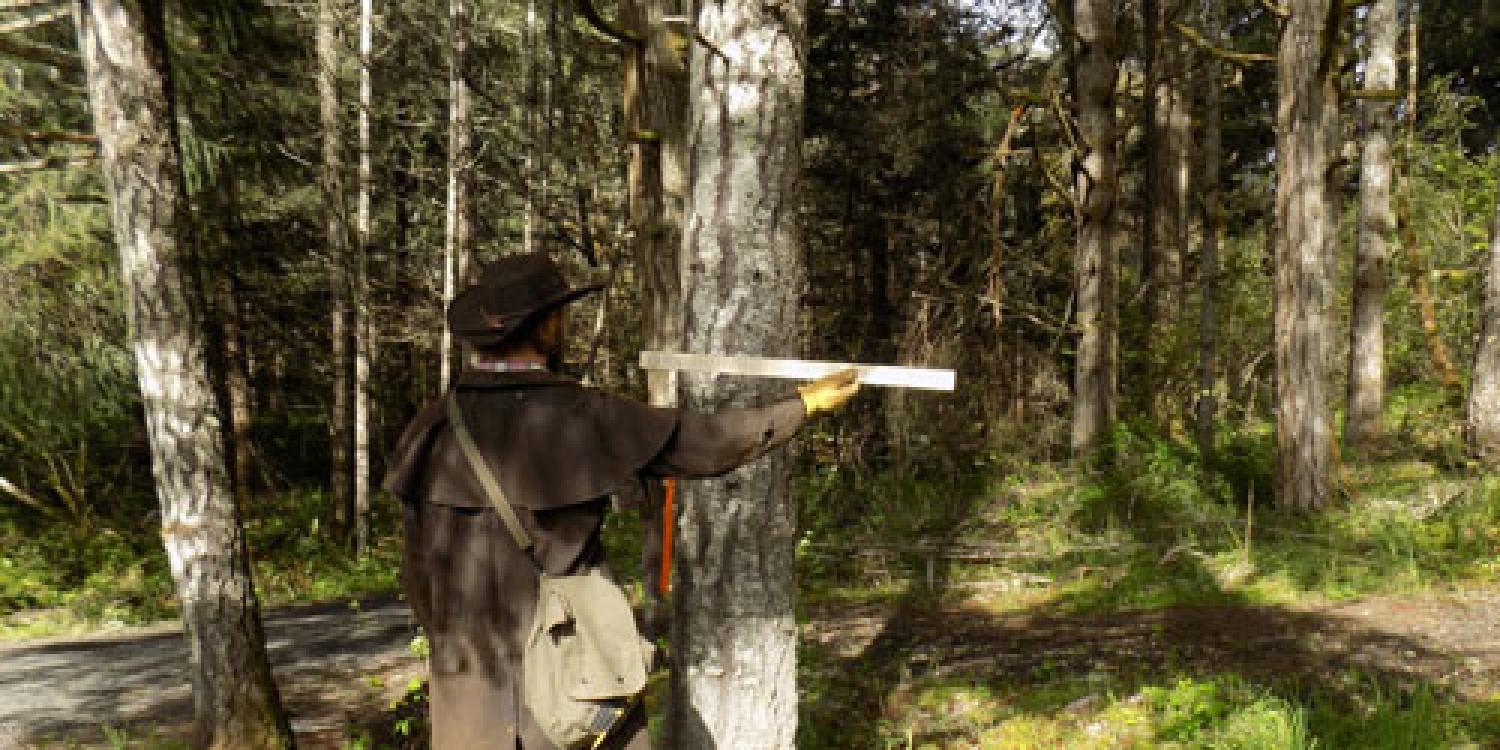
Professional foresters have access to myriad tools that measure tree size (height and diameter) and determine wood volume in individual or multiple trees. However, these tools can be expensive and complex for landowners who need only quick and rough estimates of their forest resources.
The Woodland Stick is a simple and cost-effective tool that forest landowners can easily use to obtain rough estimates of average tree size and wood volume on their properties. The stick has been used as an educational and measurement tool by Oregon State University and other university Extension programs for many years, but little information is known about its impact.
In 2017, OSU Extension revised the OSU Woodland Stick to aid master woodland manager volunteers in advising their peers on land management decisions. The stick was reprinted to include graphics and tables comprising forest health, canopy class, tree spacing, tree performance rating, fixed plot dimension, cross drainage spacing, and thinning information. The stick is 1¾ inches wide, one-fourth inch thick and three feet long.
The Woodland Stick is a forestry field tool that members in the Master Woodland Managers (MWM) volunteer training program can use while on site visits to advise fellow landowners on how to make land management decisions and understand tree volume.
OSU assistant professors and Forestry and Natural Resources (FNR) Extension foresters Lauren Grand and Alicia Christiansen and FNR Extension specialist Francisca Belart e-mailed a survey to 157 uses of the new stick. The survey included 20 questions that explored how often landowners used the Woodland Stick, which features of the stick they found most useful, whether they used the stick for making management decisions, whether MWMs used the stick while volunteering with other forestland owners, and which features of the stick needed improving.
The survey response rate was 43%, and 88% of survey respondents were MWM volunteers.
Grand, Christiansen and Belart published their survey results in the Journal of Extension.
Among the survey findings:
- Over 60% of respondents strongly agreed or somewhat agreed that the Woodland Stick met their needs, has innovative features, and is enjoyable to use;
- 28% reported using the stick when writing a forest management plan;
- 54% reported using it when conducting a forest inventory;
- 48% stated that they used the Woodland Stick at least once per year;
- Of the respondents who identified as MWMs, 55% used the Woodland Stick while volunteering to assist other landowners like themselves, and 47% said they had recommended using the stick to someone else.
When asked to assess how the stick could be improved, survey respondents recommended that it be constructed in a way that would allow it to double as a walking stick. Respondents also recommended that a publication or user's manual addressing how to use the stick should be included with every stick purchased or acquired.